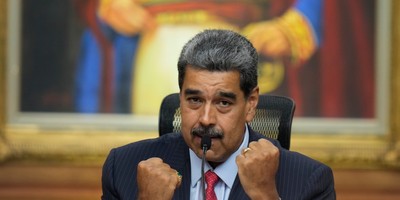What a wild ride it's been on the world's financial markets. It's as if the hurricane that had just blown away Galveston, Texas, reversed course, rushed back out to sea, and on the way took care to deposit every house, building, street and road it had washed away back in the same place and in much the same shape.
But if you looked closely, you'd see crews of workmen trying to shore up one structure after another, and the city planners proposing to build a whole new system of breakwaters to save the whole island.
You can measure the high and low tides of the markets last week by looking at the gyrations of the Dow Jones Industrial Average. The market may have ended almost where it started, but in the meantime it had swung a thousand points as investors reacted to every sign of panic on Wall Street and every whisper of hope from Washington.
The team of Henry Paulson at Treasury and Ben Bernanke at the Federal Reserve have been rushing around plugging holes in the dikes as they've developed, trying different strategies for different breaches. They'd rescued both those oversized public-private disasters, Fannie Mae and Freddie Mac, but it wasn't enough to calm the crisis in the housing market. They'd taken the assets of Bear Stearns and sold them off. They decided to let Lehman Brothers go under. But the waters kept rising. AIG was next to be threatened and if it went under, much of the world's economy would go with it. So they lent it enough money to keep it afloat and kept on bailing.
Toward the end of the week, the ad hoc firm of Paulson and Bernanke unveiled the biggest rescue operation since the New Deal, proposing to buy hundreds of billions in securities that couldn't be traded now because the entire market was seizing up. It was the biggest, most daring decision of all - to use the full faith and credit of the U.S. government, that is, We the People, to get credit flowing again.
Recommended
One could question the wisdom of each decision these two made along the way. Are they dedicated and innovative public servants, or just the financial version of Laurel and Hardy?
But there's little question their action may give markets hope - if Congress will only cooperate or even improve on their proposal. Imagine the fall-out if they hadn't acted. They bought some time and confidence, and what else does credit consist of?
The one thing Paulson and Bernanke have not done is dawdle. Or make small plans. Ben Bernanke, who made his academic reputation studying the causes of the Great Depression, was not about to repeat the mistakes of the Fed in the 1920s, and Henry Paulson wasn't going to follow the lead of the Hoover Administration and make only small, tardy reforms. Both have responded to a major crisis with major moves.
The dynamic duo may be faulted on the result of each individual remedy they adopted to stem the panic, but not on the energy with which they've moved. Whatever criticisms can be made of their management, this is scarcely proving a do-nothing administration. Now if it can just get this do-nothing Congress off its earmarks.
Remember Paul Volcker? He was the head of the Federal Reserve during the Reagan administration who defied conventional wisdom, rode out a recession, and began the long-lasting economic comeback of the 1980s. For some time he's been urging a new version of the Resolution Trust Corporation, the outfit that stepped in to stem the savings-and-loan collapse of the 1980s.
The RTC took over the assets of failing savings-and-loans, and held them till they could be sold at a more realistic price. Lest we forget, there are real assets - houses and buildings - under all that now over-valued paper the market won't touch now.
There is a much earlier precedent: the Home Owners Loan Corporation of the 1930s, one of the first of the New Deal agencies. It wasn't clear that the experiment would work (it did), but Franklin Roosevelt was determined to try one new tack after another to get a stalled economy moving again. He was not going to just drift, complacent in the face of mounting disaster.
In the meantime, the New Deal would keep hope (and therefore credit) alive. FDR realized that he was presiding over a country rich in capital, both human and material, despite all those who proposed to ride out the storm, even at the cost of letting everything go under.
FDR was not afraid to change course from day to day. Till something worked. He tried bold experimentation in the face of emergency. So should we. Each generation, it seems, has a rendezvous with destiny.

























Join the conversation as a VIP Member